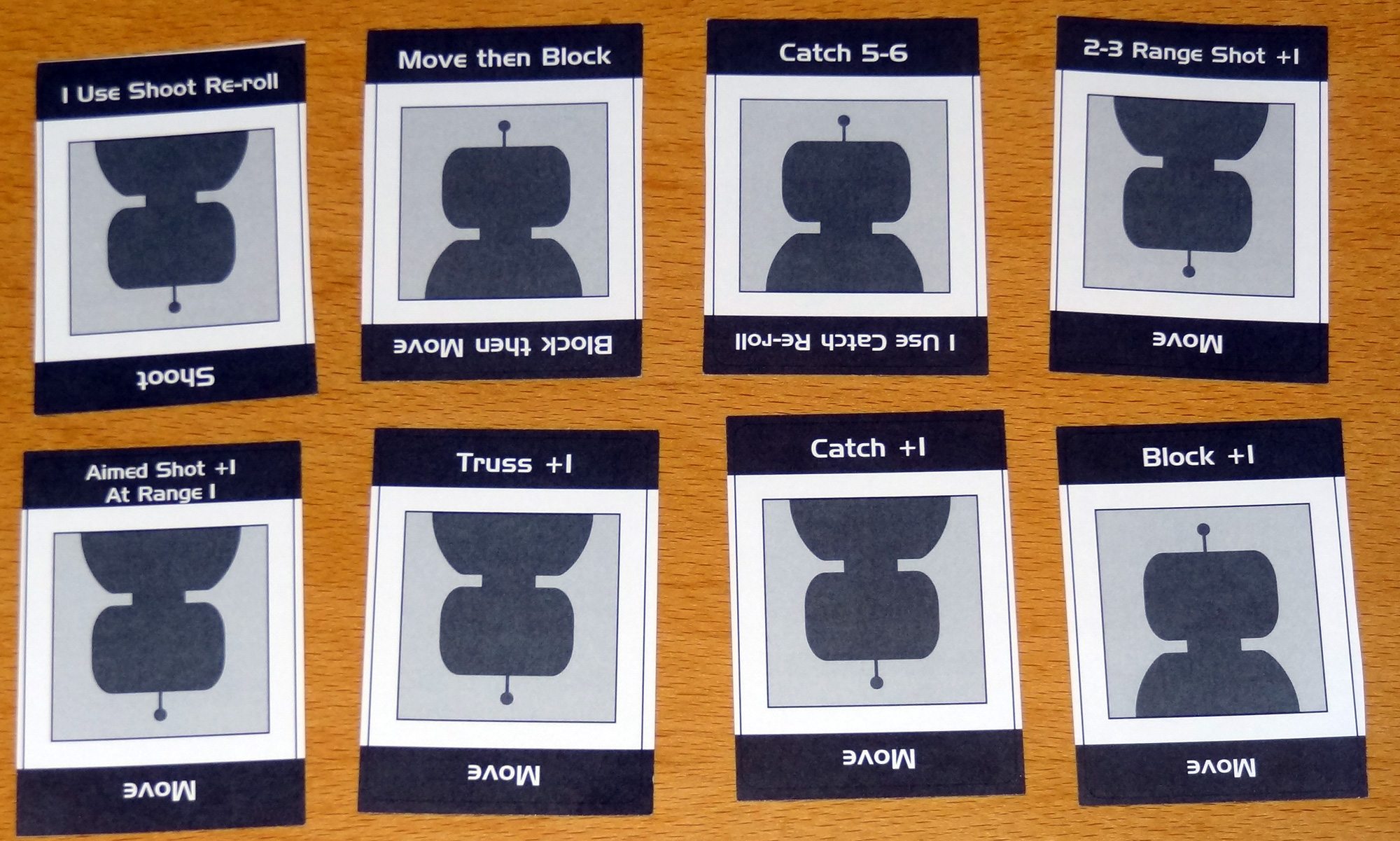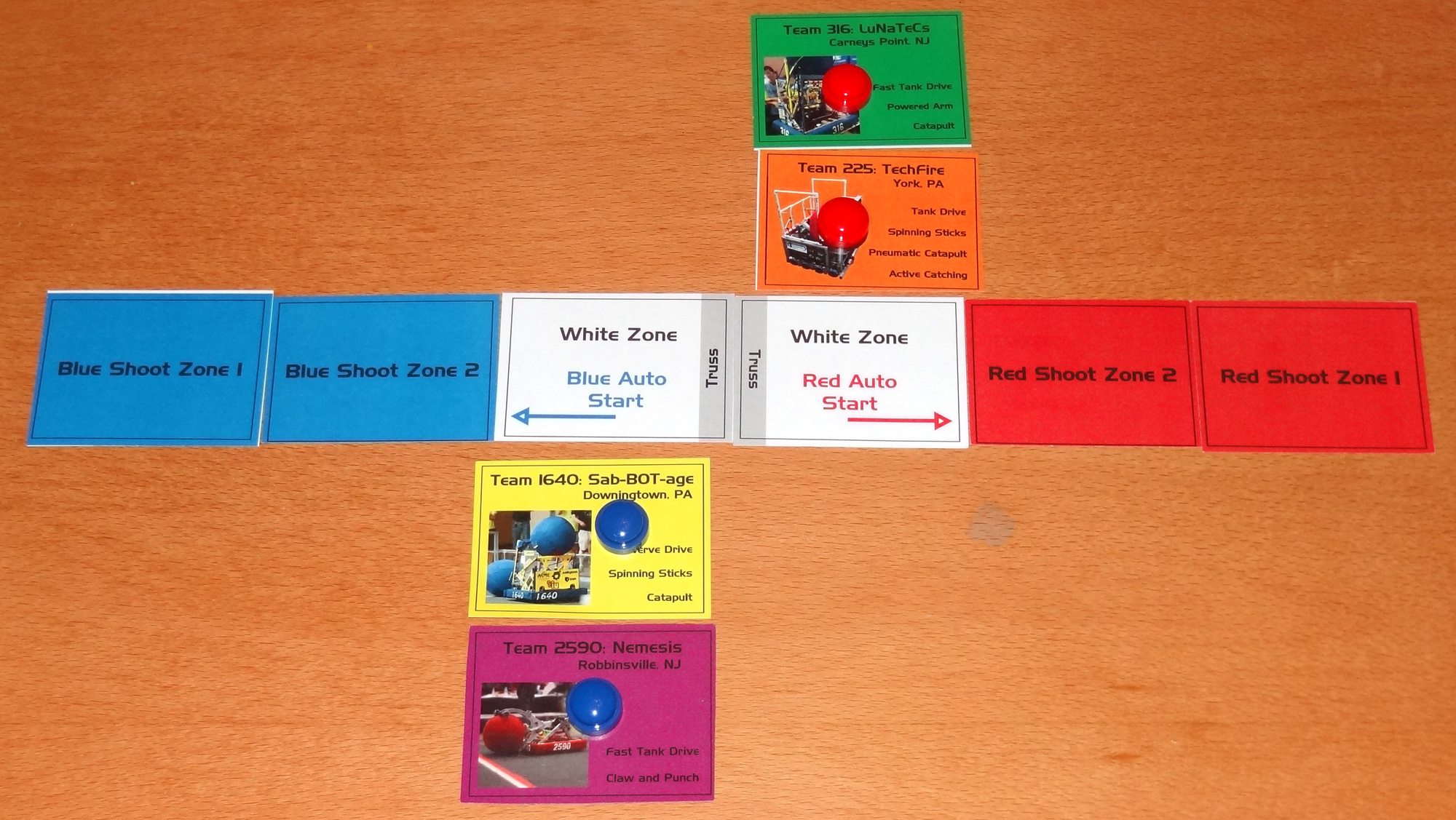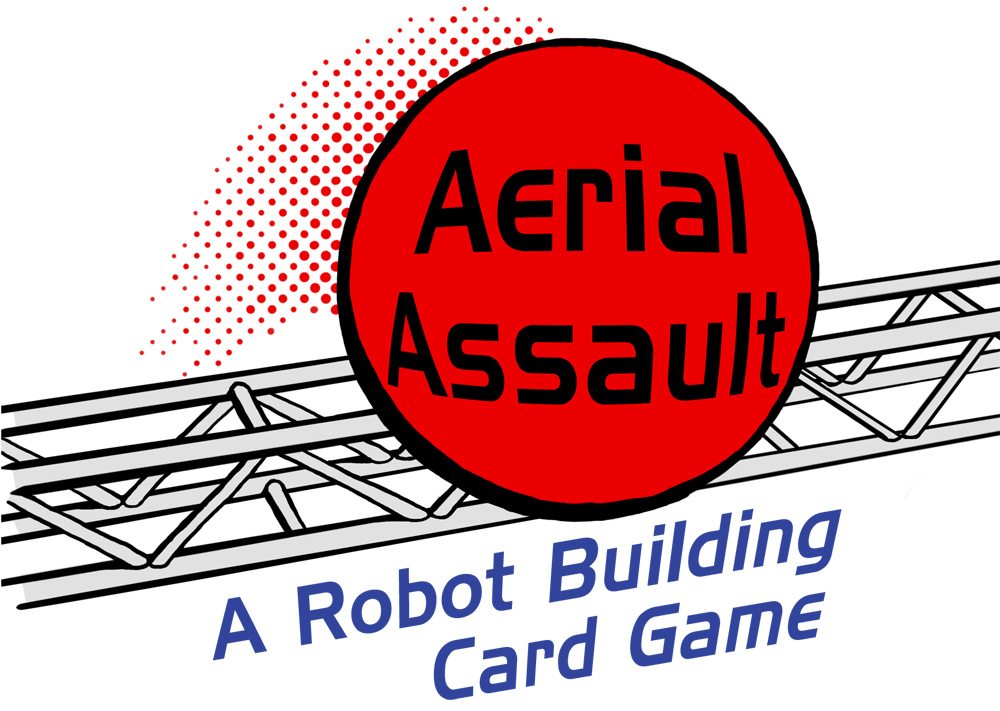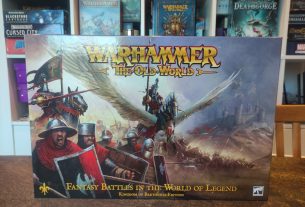FIRST (For Inspiration and Recognition of Science and Technology) is an organization for youth with a focus on engineering and technology. It runs, among other things, the FIRST Robotics Competition, in which teams of high school students build robots to play a game of some sort. The teams have six weeks after the game details are released to build a robot for the competition. Aerial Assault is a card game inspired by 2014’s competition, Aerial Assist.
At a glance: Aerial Assault is for 2-4 players (up to 6 with the deluxe version), ages 13 and up, and takes about 30 minutes to play. It is currently on Kickstarter, and a pledge for a copy of the game is $25 for the basic game, or $35 for the deluxe version. I think it could potentially be played by kids as young as 10; the game has nothing thematically inappropriate for younger kids, but the building and programming might be a little trickier.
New to Kickstarter? Check out our crowdfunding primer.
Components
The Basic version (2 to 4 players, 4 robots)
- 4 Team Cards
- 16 Basic Action Cards (4 per team)
- 52 Robot Part Cards (13 per robot)
- 24 Special Action Cards
- 6 Playing Field Zone Cards
- 2 Scoring Cards
- 4 Alliance Selection Cards
- 2 red ball tokens and 2 blue ball tokens
- 4 six-sided dice
The Deluxe version (Basic Game plus items below, 2 to 6 players, 6 robots)
- Extra Team Cards (depends on number of backers)
- 8 Basic Action Cards (4 per team)
- 26 Robot Part Cards (13 per robot)
- 12 Special Action Cards
- 2 Alliance Selection Cards
- 1 red ball token and 1 blue ball token
- 2 six-sided dice
I got a prototype to try out the game so it does not have finished artwork or final quality components, but Steve Cole of Escape Velocity Games assured me that the design and artwork of the cards would be tweaked and polished before publication.
How to play
A draft version of the rules is available here. There’s a video explaining the actual FIRST Robotics game so you can get a feel for what the actual robots did in competition; the game is somewhat simplified from the real game but incorporates a lot of the main rules.
The goal of the game is to score the most points by getting the ball in the goal, throwing the ball over the truss, catching the ball, and using assists to get bonus points.
The game takes place in two parts: first, players will build their robots by selecting from a number of parts. Then, the robots will be teamed up and players will use action cards to move their robots around the field of play, attempting to score points.

Each player takes a Team card plus a stack of 13 parts cards and 4 basic action cards. (The sets of cards are identical except for color and team name.) You’ll use the cards to build your robot.
Each card has a number of weeks at the bottom, which represents the amount of time it takes to build that part. Better parts take longer, of course. You have a total of six weeks to build your robot. You’ll need to choose one Drive Train, one Floor Pick Up, and one Shooter. Optionally (if you have time) you may add Active Catching, which increases your chances of catching a ball thrown over a truss.

Next comes Driver Training, which represents your team practicing how to drive the robots. You shuffle and deal out eight Special Action cards on the table, and take turns selecting cards until each player has taken three (making a hand of seven, including the basic action cards). Each time a card is taken, a new one is dealt in its place.
If you spent less than 6 weeks building your robot, you get to spend extra time training your driver, which means more cards. Each player who has extra training time will get to draft two additional Special Action cards.

Once this is done, you find out your alliances. There are four Alliance cards (two blue and two red)—these are shuffled and handed out randomly, forming two teams.
Six cards are placed to make the field: blue shoot zones on one end, red shoot zones on the other end, and two white zones in the middle with the truss running down the center. The goals are at either end of the field. The robots start in the white zone closer to their own goal, and each robot starts holding a ball marker.
First there is an “autonomous” round, which represents the 10-second autonomous period in the real game. Goals scored during this time count double. Then the game will progress to the driver-controlled period, which will last for 5 rounds of 5 actions each.
The actions available are:
- Move: your robot moves 1 or 2 spaces, depending on your drive train.
- Shoot: try to shoot the ball into the goal; compare your die roll to your Shooter part.
- Truss: try to throw the ball over the center truss; compare your die roll to your Shooter part.
- Catch: try to catch a thrown ball; compare your die roll to your action card.
- Block: prevent a robot in the same space from taking their action; compare rolls, defender wins ties.
- Floor Pick-Up: try to pick up a ball from the ground in your zone; compare your roll to your Pick Up part.
For the autonomous round, you play three cards from your hand secretly, and then everyone flips them over and resolves them in order. Most of the time you’ll just move toward the goal and try to shoot it in, since you’re already holding the ball. A goal scored during the autonomous round is worth 20 points.
After the autonomous round, players will each play one card at a time secretly, then reveal simultaneously and resolve them. You get 10 points per goal, 10 points for successfully throwing over the truss, 10 points for a successful catch, and 10 points per assist. (You get assist points if multiple robots touch the ball before it goes into the goal.)

When a ball goes into the goal, it reappears on the opposite end of the field. After the autonomous period, there will only be one ball per alliance rather than one per robot.
There are a few additional rules about how to do a “kiss-pass” to pass the ball to a nearby robot, but that’s essentially it. After each round of 5 cards, everyone picks up all their cards and starts another round. The game ends after 5 rounds, and the highest score wins.
The Verdict
I love the fact that Aerial Assault was designed by some students who are actually involved in FIRST Robotics: Katie Kline and Gracie Putnam are members of TechFire, a team from York, Pennsylvania, and Gracie’s dad Peter Putnam had the original idea for the game. You don’t have to know much about FIRST Robotics in order to play the game, but I think those who are familiar with it will especially enjoy the way the game works. The gameplay itself is pretty straightforward, and the simultaneous action-selection is a great way to simulate everyone driving robots around on the field.
Unlike the actual competition, the game rules won’t change from year to year, but I like the idea of having to decide what parts to build, and then putting your robot into play. I also like the fact that you pick your robot and train your driver before you find out which alliance you’re on: if you and your teammate both picked fast drive trains but can’t shoot well, it may not be as effective as having diversified skill sets.
The two-phase idea is pretty cool: you’ll have to decide which things your robot will be best at. With only 6 weeks, you can’t build the best of each part, and then you have to decide whether it’s worth using only 5 weeks so you can get some extra action cards, which come in handy. The basic action cards you start with only have one pick up and one shoot among them, so that means with those it’s only possible to score one goal per round, before you get to pick up your cards again. Getting better cards gives you an opportunity to get to the ball and move it down the field more quickly.
Once you get to the driver-controlled round, there’s a combination of planning your moves, coordinating with your teammate, and a bit of luck in the die rolls. Shooting is easier if you’re closer to the goal, but if you can shoot from farther away it gives you more time to score again. Passing the ball or catching a ball thrown over a truss takes particular coordination—first, you both have to play the truss/catch cards at the same time, and then you both have to succeed at your die rolls for that to happen. Finally, since your cards get discarded until the end of the round, you have to decide which side of the double-sided action cards you’ll use for each one. Don’t use up your Shoot card as a Move if you’re planning to shoot for the goal soon.
The autonomous round seems like the weakest part of the game, because in most cases everyone is just going to play some combination of Move and Shoot, so it mostly comes down to the die rolls. The only other option is to move in the opposite direction and try to block the other team from scoring, but since you’re already carrying a ball it seems to make sense to score with it. Although I can see why it’s an important part of the real-life robotics competition, in the game it just means you play three cards at a time rather than one. There’s no real conceptual difference between “autonomous” and “driver-controlled” in the card game, and so it seems like an unnecessary complication in the rules.
Aerial Assault is a great simulation of the FIRST Robotics Competition, and I like that it does so with essentially just a set of cards. It definitely seems like the sort of game that could be turned into a big box game with a full board, miniatures, and fancier bits, but I think making it simpler and cheaper will also make it more accessible to the kids who are involved in the actual FIRST program.
If you like FIRST Robotics, then you should certainly check out the Aerial Assault Kickstarter campaign and consider backing for a copy. And if you’re not familiar with FIRST Robotics, go watch some videos, and then go back the project!
Disclosure: GeekDad received a demo prototype of this game for review.




This looks like a really fun game for the kids. Thank you for introducing it to me.